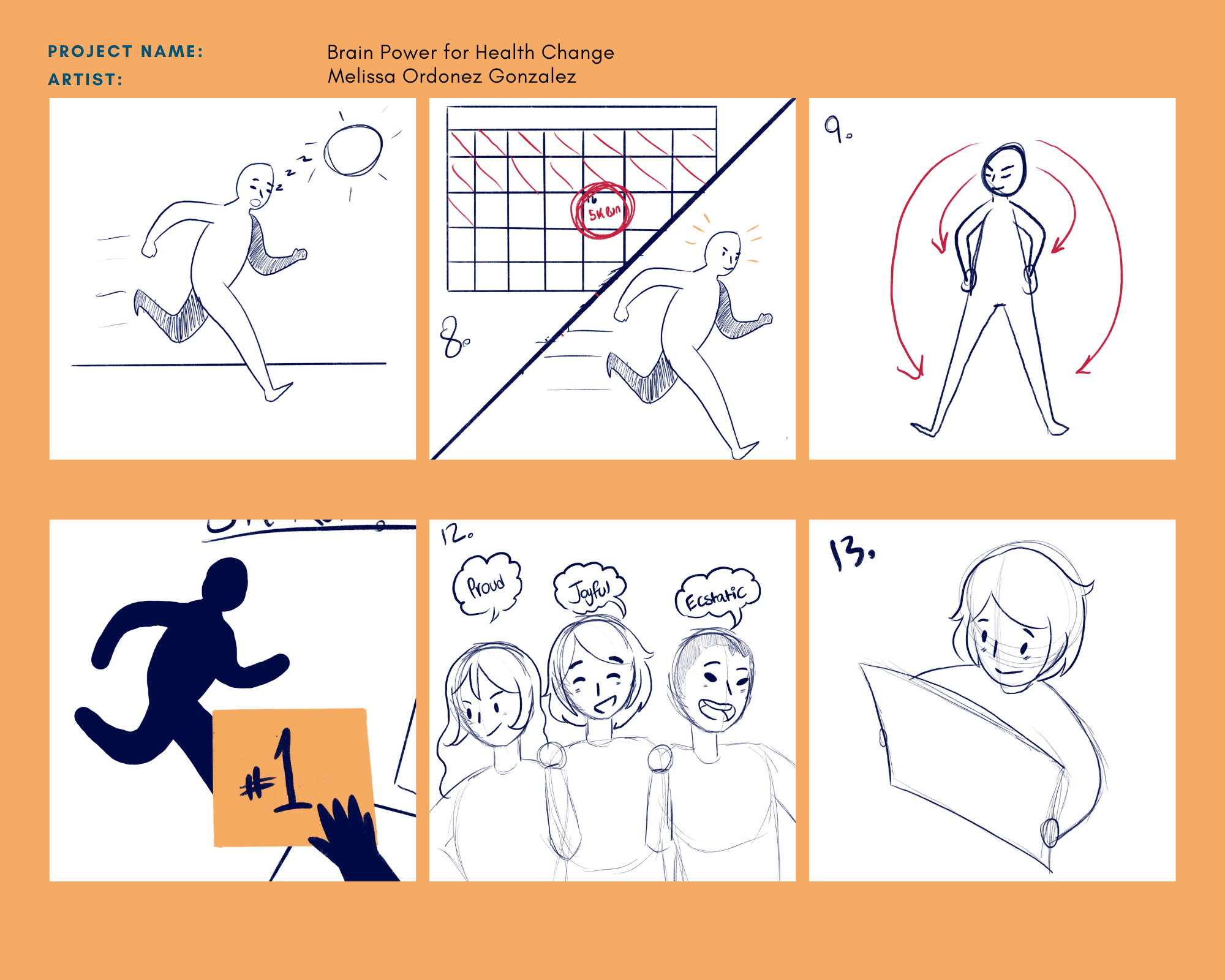
The Lifeology team has been busy working with health professionals, from mindfulness coaches to fitness experts to medical specialists. We have been creating a series of Lifeology courses for LIFE Ascent, a wellness program that gives subscribers the tools needed to improve their health. It is a program based on learning, measuring and establishing habits across multiple areas of health. Lifeology courses are part of this program. We have tapped into our community of writers, reviewers, and illustrators to help develop these courses.
This interview is close to my heart. Before working at Lifeology, I was a visual art educator with a career spanning two continents and 25 years. I taught AP Art and Design at a high school in Chapel Hill, North Carolina. Melissa Ordonez Gonzalez was one of my award-winning AP students, and having her illustrate for Lifeology was amazing!
Can you tell us a little about your background?
I’m an artist from Durham, North Carolina. I’ve lived here my whole life and I’ve been drawing ever since I could hold a pencil.


Digital Illustration by Melissa Ordonez Gonzalez
How did you initially find Lifeology?
Lifeology found me! Elaine Algarra was my art teacher from high school and was the one who contacted me and asked if I would be interested in illustrating a Lifeology course.
Have you illustrated a Lifeology card deck before?
No, actually this is my first time doing anything like this!
Would you consider yourself a SciArtist?
Not at all, this is my first time ever getting involved in a SciArt project. I have completed a lot of work digitally but not in the science realm, my work tends to be two-dimensional design with strong graphic principles. I use line, texture and color to create emphasis in my work.
The course you illustrated was on Brain Power and Visualization. When looking at the course script, what were your initial impressions?
The first thing I noticed was the visual notes. While reading the script, the visual notes immediately made me start brainstorming different ideas for the storyboard. They were a great place to start, especially being new to illustrating for Lifeology.

Visual Notes Document for collaboration between illustrator Melissa Ordonez Gonzalez and the Lifeology Team.
Are visual notes a useful starting point? Did you make any decisions to develop ideas further?
The visual notes were extremely helpful and gave me something concrete to start with. I was able to brainstorm different ideas and sketch quick concepts.
Do you use storyboarding in other work?
Normally storyboarding isn’t part of my process. However, it proved to be very useful as it was a lot easier to piece things together. I’m used to planning concepts and sketches, working in a sketchbook whether it be digital or traditional as a way to develop ideas. This was a different way of working as it was more focused but I enjoyed it.


Storyboard drawings are rough thumbnail sketches that give a quick visual idea and overall flow of the course. Storyboard images are then reviewed, modified and refined.
Can you tell us a little more about how you get from visual idea to storyboard image to final rendered piece?
I began by making quick line drawings for the storyboard to show composition, focal point, and visual idea. Once the storyboard was approved, I made a rendered sketch and started laying down the flat colors. After that, I added linework when the linework is complete, I start shading the final drawing. I find that using a textured brush for shading and using clipping masks help create rendered shadows.
What are your illustration tools of choice and why? Any recommendations to those starting out?
My main tools are My iPad Pro, Apple pencil and the drawing program Procreate. These have been my tools of choice for about three years or so. When I first got started with digital art, I used a cheap drawing tablet and a free drawing program that would sometimes overheat my laptop. My new setup has made a big difference. I love drawing on a screen, and the ability to take my set up wherever I go is awesome. I would recommend the drawing program Procreate, You can download it on iPad and iPhone as well. Procreate is filled with different features and tools. You can import your favorite brushes and make animated gifs. Overall it’s a well-rounded drawing program that won’t hurt your wallet.



Three Images from the Brain Power for Health Change Lifeology Course by illustrator Melissa Ordonez Gonzalez
Did you learn anything from your course illustration? About your artwork, health info or otherwise?
Before working on this course, I had never heard of the Endowment Effect. It was super cool to learn about how your brain takes ownership of a goal and helps your body achieve that goal.



Three Images from the Brain Power for Health Change Lifeology Course. The image on the right illustrates the endowment effect.
Anything that surprised you?
I was not expecting to get any visual notes. But it was a pleasant surprise as it helped tremendously with brainstorming for the storyboard and to get a feel for the tone of the course.
Tell us a little more about your other types of Art. Do you sell art?
I mostly do digital art, but it usually depends on the mood some days I’m painting or carving up some rubber stamps for block printing.
At the moment I do not sell any art. However, I am in the progress of creating an online shop where I plan to sell prints, stickers, and original paintings.



Melissa is a bilingual illustrator who lives in Durham, NC.
Find out more about Melissa by following her on social media!
- Instagram account: my_nameis_mel





